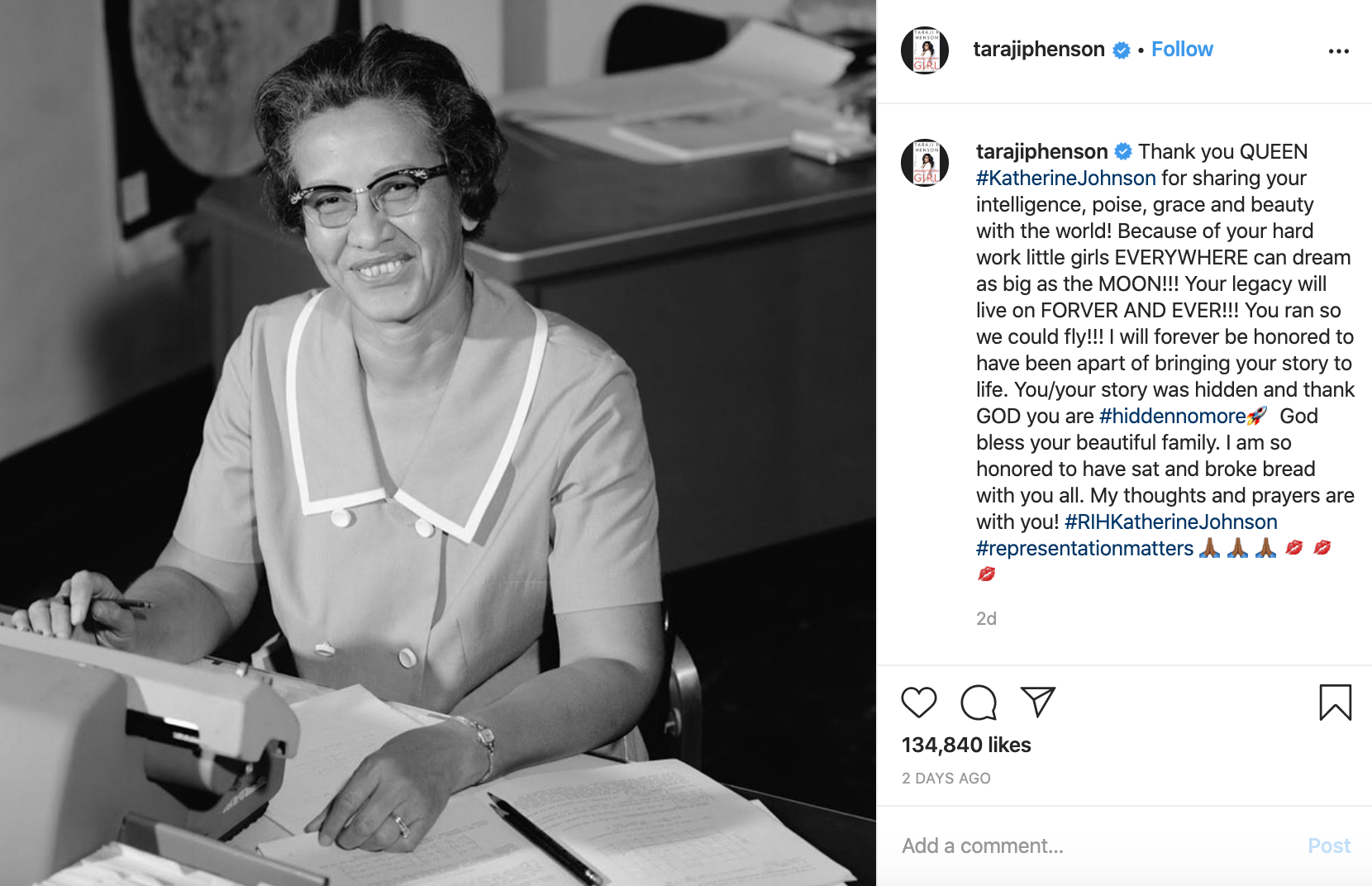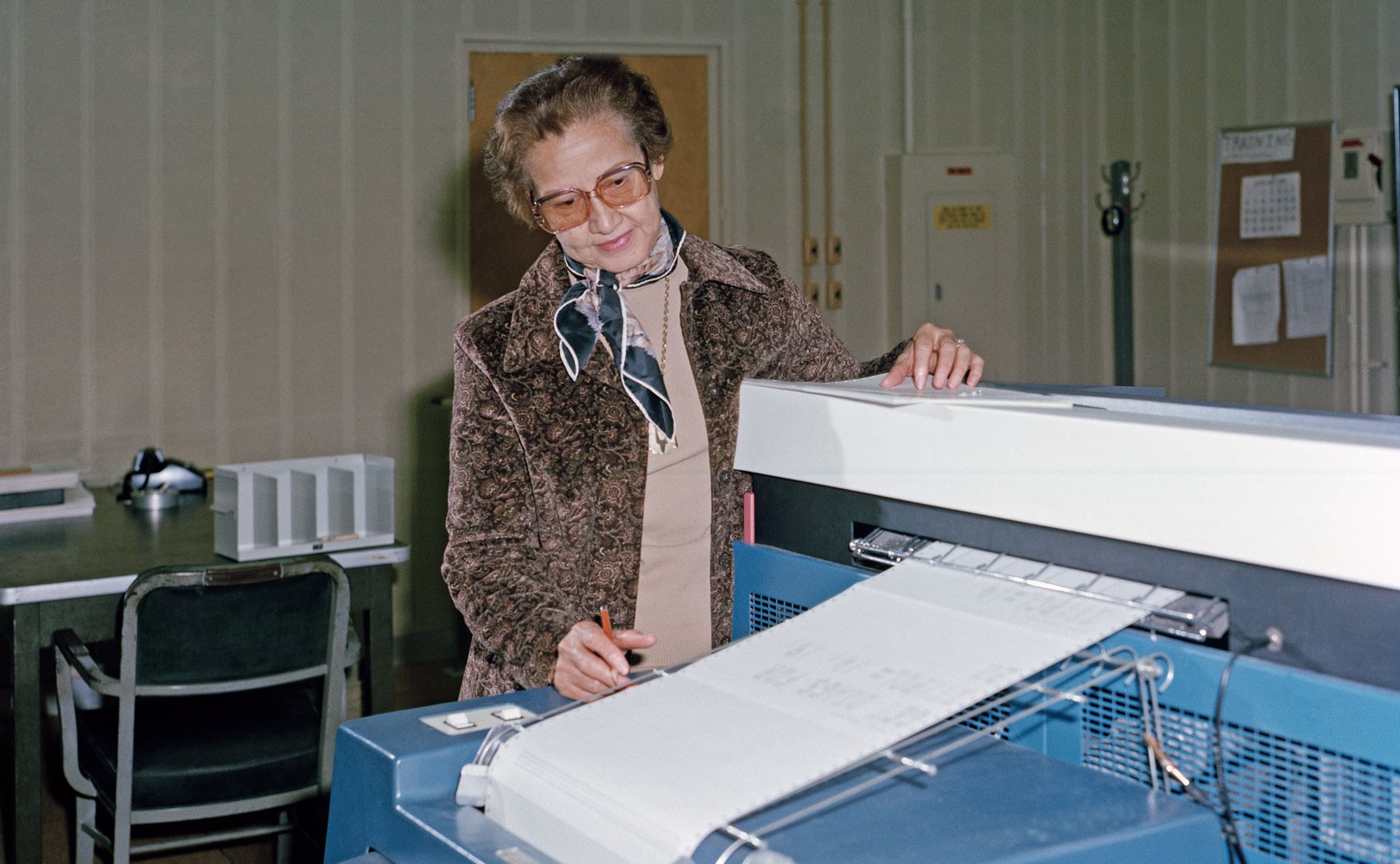Photo credit: NASA
On 24 February 2020, Katherine Johnson, one of a group of black women mathematicians at NASA and its predecessor who were celebrated in the 2016 movie “Hidden Figures”, died at the age of 101. She was the mathematician who broke barriers at NASA.
Bruce Anderson, writing for LinkedIn’ Talent blog states, “The sky was never the limit for Katherine Johnson. Instead, it was merely the starting point, the playground for a 33-year career as a brilliant mathematician for NASA, where she helped put astronauts into space, into orbit, and ultimately on the moon. Katherine, one of the cohort of African American women portrayed in the best-selling book and blockbuster 2016 movie “Hidden Figures,” died this week at 101. Actress Taraji Henson, who played Katherine in the movie, wrote on Instagram: “You ran so we could fly!!!”

“Microsoft CEO Satya Nadella posted on LinkedIn: ‘Katherine Johnson will be remembered as a skilled mathematician and pioneer in her industry, but to me and many others, she will be remembered not just for her contributions to the early years of the space program, but for how she helped NASA evolve into a more enlightened organization. Her legacy is a powerful example of how one individual can act as a catalyst for change and drive meaningful impact in their organization and in society broadly.’”
“As Black History Month nears its end in the United States and Canada, it’s worth considering Katherine’s remarkable journey. For HR leaders, her story underscores that the business case for diversity isn’t just about driving more revenue and profitability; it’s about accomplishing things that right now you’re only dreaming of. For recruiters, her story is a reminder of how critical a single hire can be and how a truly exceptional employee by necessity can’t be like everyone who already works for you.”
Diversity is more than revenue and profit
Diversity drives revenue growth and profitability, as demonstrated by a growing body of research, including work from respected sources such as McKinsey, Boston Consulting Group, and Bersin by Deloitte.
“But not many organizations have crafted a vision statement that says, “Make more money.” Most companies want to have a larger impact — to create a transformative product, to deliver service that transcends customer expectations, to be known as the very best at what they do.
NASA’s goal wasn’t to make money; it was, instead, to fulfill U.S. President John Kennedy’s stated ambition of “landing a man on the moon and returning him safely to the earth.”
Studies demonstrate that organisations with a diverse workforce are more creative, more innovative, and more capable of problem-solving. Katherine’s work was critical to both parts of JFK’s vision, the getting an astronaut to the moon and the getting him back safely.
Katherine joined NASA in 1953 and was soon inducted into the agency’s elite Flight Research Division, where she stayed for the rest of her career. She quickly proved indispensable.
“She did groundbreaking work on orbital mechanics that was instrumental to the success of the early U.S. space program. When astronaut John Glenn was nearing the launch that would make him the first American to orbit the earth in 1962, he asked that his planned orbital trajectory — calculated on an early IBM computer — be cross-checked by Katherine. ‘If she says the numbers are good,” he said, “I’m ready to go.’”
Your next hire could be a catalyst for change
Beyond Katherine’s stellar mathematical work, she also changed NASA’s workplace for both women and people of color.
“When Katherine arrived at Langley, the cafeteria had already been desegregated but the bathrooms had not. While the bathrooms for African American employees were all marked by signs, the bathrooms for white employees were not. Katherine — being well-grounded in geometry —used the bathroom nearest her desk. She initially had no idea that it was reserved for white women. By the time she realized her “error,” she was not inclined to change her ways.
More typically, she was clear-sighted about the changes she was helping to bring about. For example, Katherine was intensely curious about the technology that underlay NASA’s work and she asked her engineering colleagues why she wasn’t allowed to attend scientific briefings.
“Girls” weren’t allowed, she was told. “Is there a law against it?” she replied. It turned out there wasn’t and her quiet persistence won out. Katherine and other women gained access to the agency’s briefings.”
Continue to seek potential over pedigree
“Katherine Johnson did not have a doctorate or a diploma from an elite school, yet she was NASA’s go-to mathematician for trajectory calculations. Even she, however, might have had a difficult time calculating or even imagining her own trajectory.
“Nearly a century after being born in a West Virginia town that only provided African Americans with education through the eighth grade, Katherine received the Presidential Medal of Honor (2015) from Barack Obama and was present when NASA dedicated the Katherine G. Johnson Computational Research Facility at the Langley Research Center in Hampton, Virginia (2017).
She helped men reach the stars; now she inspires STEM-loving girls everywhere to reach for them. Her example can also remind talent acquisition professionals to value potential over pedigree and to seek out those candidates whose grit, confidence, curiosity, and humility (“I am as good as anyone else,” Katherine said, “but no better”) makes them think of the unforgettable woman, no longer hidden, who passed away on Monday.”
“They asked Katherine Johnson for the moon,” The New York Times noted, “and she gave it to them.”
Source
The Remarkable Life of ‘Hidden Figure’ Katherine Johnson — and Its Lessons for Talent Leaders
Bruce Anderson
LinkedIn Talent Blog

